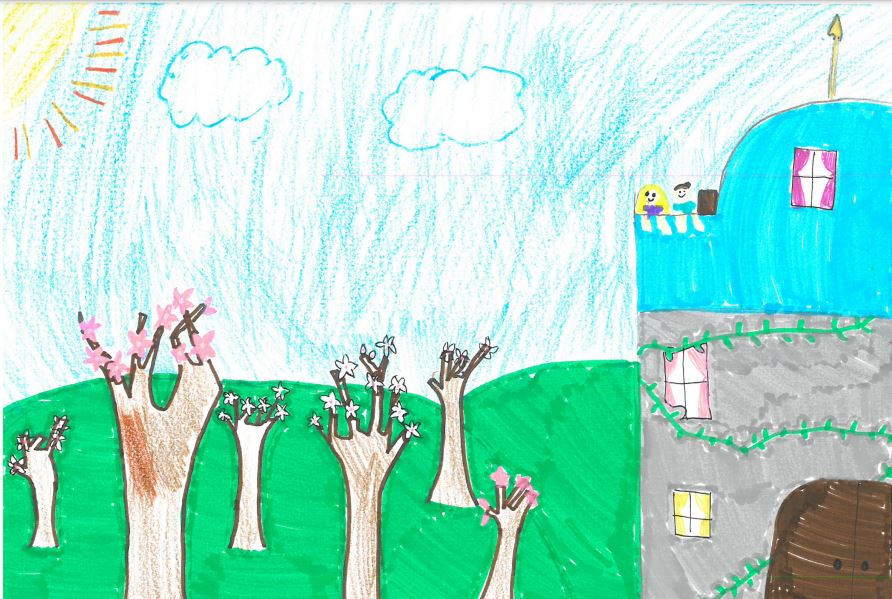« Legends represent […] something unbreakable, unquenchable. The years go by, the winds blow, the thunders vibrate, the rain falls, the lands fall, the people die, names and characters become – but the legends stay. »
Marques, G. (1997), Legends of Portugal, Lisbon: Circle of Readers
THE IMPORTANCE OF KEEPING LEGENDS ALIVE
Legends are part of the historical and cultural legacy of people. This legacy has been handed down from generation to generation through oral tradition.
The break-up of families and professional mobilities led to a situation where many of these stories are no longer passed on, hence the need for the school to work on legends, not only as narratives, but also as a mean of learning about the past of the local environment.
Today, one can no longer visit a tourist site, a village or a house without hearing the related legends. And we listen with pleasure to stories that explain the peculiarities of the place we are visiting. For example, how a giant was responsible for the volcanic formation of basalt organs on Giant’s Causeway in Northern Ireland.
Sometimes the beliefs of the legends are still very much alive. Some people throw coins or other objects into a fountain to make a wish come true or to obtain the protection of a deity; others hang the clothes of the children they want to see healed on a particular tree. Not to mention what is happening in Iceland where road construction sites often take into account the reactions of the Little Beings (elves, fairies and others) who are supposed to live on the route.
LEGENDS, WHAT DISTINGUISHES THEM FROM OTHER POPULAR GENRES?
On the opposite of the myth, which has a universal scope, legends are localised in space and often in time, they are rooted in a given territory and concern named places. This local rootedness gives legends a great deal of stability (unlike the tale, which travels a lot). It sometimes refers to a historical fact, but this is not mandatory.
Its heroes are human, and unlike the tale which presents itself as fiction, the legend presents itself as a truth. It can be considered as reality, even if the story is sometimes tinged with supernatural, like those ghost stories that are supposed to haunt many Scottish castles! It’s because it’s often perceived as true that the legend, unlike the tale, induces behaviour (e.g. not touching a certain stone because it brings bad luck), can be the subject of rituals (e.g. when saints, Jesus Christ or the Virgin Mary are supposed to intervene in people’s lives). In fantastic legends, korrigans, goblins, gnomes, etc. intervene to help or make jokes in everyday life.

Legends also allow us to travel back in time: “This is the story of… (name of the character…)”, “Many years ago, in (name of the town)”, “Says the legend…”, “It’s the story of…”. »,… Listeners can (re)experience the story in the setting in which it “really” took place.
Although the word legend has taken on a fictitious nuance (“incredible story”) during the 19th century, it continues to serve as a landmark in the area. Without GPS, maps or history books, it’s possible to build, thanks to the legends of a given territory, a mental geographic and common historical landmarks.
ACTIVITIES FOR STUDENTS
- Have the child tell and then write down legends collected by himself, by his family, in the village, in the neighbourhood…
- To enable the children to anchor themselves in a territory, take them around the school or to a legendary place, tell them about the legend and ask them to look for the real events that are the basis of the legend.
- Show the permanence and similarity of some stories by making the child aware of the passage of time. Past and present, traditional/contemporary or urban legends…
- Links with geography. For example, legends about volcanoes, rivers… which can explain local topography or certain regional phenomena. Ask yourself: Why do places have names? What story is told about a place?
- Links with history or archaeology. For example, if a dinosaur skull or bone was found one day, a legend may have arisen that it was the head of a dragon or the bone of a giant…
- Links with biology. For example, if plants or animals are mentioned in the story, ask the child to research the characteristics of this species, the legend it may have generated and try to understand why it appears in the story.
- Explore the emotions that the legends provoke, evoking difficult subjects for the children (such as death and fear) present in these stories.
- You can also make up a legend from events and objects existing in our reality.
For example :
“It is said (but you are free to add to or shorten this anecdote, swearing that it happened to a friend of a friend of a friend, all very reliable friends) that a user, one full moon evening, noticed that his city bicycle was reluctant to do his job, refusing to move forward or moving in the wrong direction. This intrigued man examined his machine and saw a pentagram and diabolical signs engraved under the saddle.
Reporting this anecdote to friends, he learnt that one man’s leg was crushed one full moon evening while riding this bicycle, and that another one heard voices threatening him with the worst abuse if he continued to use this peaceful bicycle. Finally, someone swears to have learned, from a reliable source, that this all story’s a plot hatched by taxi drivers, furious to lose part of their clientele because of this cursed bicycle.” Luigi Rignanèse